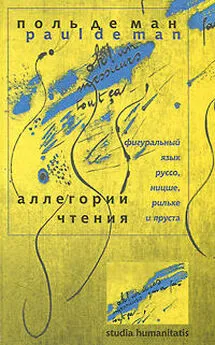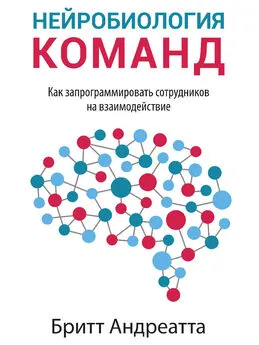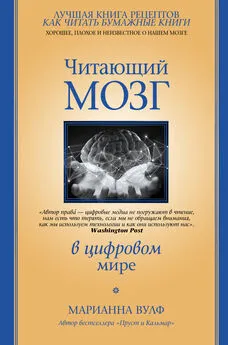Марианна Вулф - Пруст и кальмар. Нейробиология чтения
- Название:Пруст и кальмар. Нейробиология чтения
- Автор:
- Жанр:
- Издательство:ООО «Издательская Группа «Азбука-Аттикус»
- Год:2020
- Город:Москва
- ISBN:978-5-389-18966-9
- Рейтинг:
- Избранное:Добавить в избранное
-
Отзывы:
-
Ваша оценка:
Марианна Вулф - Пруст и кальмар. Нейробиология чтения краткое содержание
В этой книге, мгновенно завоевавшей мировую известность, видный американский нейробиолог Марианна Вулф исследует, как «открытая архитектура», пластичность нашего мозга помогает и мешает людям в их попытках научиться читать и обрабатывать письменный язык. Читателю предстоит увлекательное путешествие по временам и эпохам, знакомство с разнообразными иллюстрациями развития отдельного человека – от младенца, который слушает колыбельную, до настоящего эксперта – читателя произведений Пруста. Разобравшись, как эволюция и развитие чтения изменили само устройство человеческого мозга и суть нашей интеллектуальной жизни, мы поймем, что мы – это действительно то, что мы читаем.
В формате PDF A4 сохранён издательский дизайн.
Пруст и кальмар. Нейробиология чтения - читать онлайн бесплатно ознакомительный отрывок
Интервал:
Закладка:
39. J. A. Church, S. E. Petersen , and B. L. Schlagger (2006). Regions Showing Developmental Effects in Reading Studies Show Length and Lexicality Effects in Adults. Представлено Обществу нейробиологии.
40. Palmer et al. Investigation of the Functional Neuranatomy of Single Word Reading and Its Development.
41. R. B. Ivry, T. C. Justus , and C. Middleton (2001). The Cerebellum, Timing, and Language: Implications for the Study of Dyslexia // Dyslexia, Fluency, and the Brain. M. Wolf (ed.). Timonium, Md.: York. P. 189–211; R. B. Scott, C. J. Stoodley, P. Anslow, C. Paul, J. F. Stein, E. M. Sugden , and C. D. Mitchell (2001). Lateralized Cognitive Deficits in Children Following Cerebellar Lesions // Developmental Medicine and Child Neurology, 43. P. 685–691.
42. Nagy and Anderson . How Many Words Are There in Printed School English?
43. K. Stanovich (1986). Matthew Effects in Reading: Some Consequences of Individual Differences in the Acquisition of Literacy // Reading Research Quarterly, 21 (4). P. 360–407.
44. Kame’enui et al. Issues in the Design of Vocabulary Instruction.
45. Moats . Overcoming the Language Gap.
46. I. Beck, M. McKeown , and L. Kucan (2002). Bringing Words to Life: Robust Vocabulary Instruction. New York: Guildford.
47. Carlisle and Stone . Exploring the Role of Morphemes in Word Reading.
48. M. Henry (2003). Unlocking Literacy: Effective Decoding and Spelling Instruction. Baltimore, Md.: Brookes.
49. V. Mann and M. Singson (2003). Linking Morphological Knowledge to English Decoding Ability: Large Effects of Little Suffixes // Reading Complex Words: Cross-Language Studies // E. M. H. Assink and D. Sandra (eds.). New York: Kluwer. P. 1–25; E. D. Reichle and C. A. Perfetti (2003). Morphology in Word Identification: A Word Experience Model That Accounts for Morpheme Frequency Effects // Scientific Studies of Reading, 7. P. 219–237.
50. G. Greene (1969). The Lost Childhood and Other Essays. New York: Viking. P. 13.
51. M. Wolf and T. Katzir-Cohen (2001). Reading Fluency and Its Intervention // Scientific Studies of Reading, 5. P. 211–238. (Special Issue.) Вместе с моей бывшей студенткой, а теперь коллегой в Университете Хайфы, Тами Кацир, я предложила новое определение беглости, которое может служить в своем роде конспектом происходящих изменений на ранних этапах чтения. Вначале беглость чтения – продукт первоначального развития точности и последующего развития автоматизма в базовых сублексических и лексических процессах и их интеграции в чтение отдельного слова и связного текста. В числе этих процессов – перцептивные, фонологические, орфографические и морфологические на уровне буквы, буквосочетания и слова, а также семантические и синтаксические на уровне слова и уровне связного текста. После того как эти функции развились полностью, понятие беглости чтения уже относится к уровню точности и скорости, при которых декодирование относительно незатрудненное, устное чтение – гладкое и точное, с правильной просодией, а внимание может быть направлено на понимание.
52. M. Meyer and R. Felton (1999). Repeated Reading to Enhance Fluency: Old Approaches and New Directions // Annals of Dyslexia, 49. P. 83–306; R. Allington (1982). Fluency: The Neglected Reading Goal // Reading Teacher, 36(6). P. 556–561.
53. L. Cutting and H. Scarborough (2005). Prediction of Reading Comprehension: Relative Contribution of Word Recognition, Language Proficiency, and Other Cognitive Skills Can Depend on How Comprehension Is Measured // Scientific Studies of Reading, 10 (3). P. 277–299.
54. A. Baddeley (1986). Working Memory, Oxford: Clarendon.
55. Обратите внимание, что в некоторых случаях мы добрались до осознания этой взаимосвязи благодаря изучению детей с затруднениями понимания. См., например, следующие исследования: K. Nation and M. Snowling (1998). Semantic processing and the development of word recognition skills: Evidence from children with reading comprehension difficulties // Journal of Memory and Language, 39. P. 85–101; J. Oakhill and N. Yuill (1996). Higher Order Factors in Comprehension Disability: Processes and Remediation // Reading Comprehension Difficulties: Processes and Intervention. C. Cornaldi and J. Oakhill (eds.). Mahwah, N.J.: Erlbaum; D. Shankweiler and S. Crain (1986). Language Mechanisms and Reading Disorder: A Modular Approach // Cognition, 24 (1–2). P. 139–168; L. Swanson and J. Alexander (1997). Cognitive Processes as Predictors of Word Recognition and Reading Comprehension in Learning-disabled and Skilled Readers: Revisiting the Specificity Hypothesis // Journal of Educational Psychology, 89 (1). P. 128–158.
56. J. Bruner (1973). Beyond the Information Given. New York: Norton.
57. M. Lovett, S. Borden, T. DeLuca, L. Lacerenza, N. Benson , and D. Brackstone (1994). Treating the Core Deficits of Developmental Dyslexia: Evidence of Transfer-of-Learning Following Phonologically-and-Strategy-Based Reading Training Programs // Developmental Psychology, 30 (6). P. 805–822; M. Lovett (2000). Remediating the Core Deficits of Developmental Reading Disability: A Double-Deficit Perspective // Journal of Learning Disabilities, 33 (4). P. 334–358.
58. E. Bowen (1950). Out of a Book // Collected Impressions. New York: Knopf. P. 267.
1. E. Bowen (1950). Out of a Book // Collected Impressions. New York: Knopf. P. 267.
2. T. Deeney, M. Wolf , and A. O’Rourke (1999). I Like To Take My Own Sweet Time: Case Study of a Child with Naming-Speed Deficits and Reading Disabilities // Journal of Special Education, 35 (3). P. 145–155.
3. Ibid.
4. P. McCardle (2001). Emergent and Early Literacy: Current Status and Research Directions // Learning Disabilities Research and Practice, 16 (4). (Special Issue.)
5. National Center for Education Statistics, NCES. The Nation’s Report Card: National Assessment of Educational Progress. Washington, D.C.: U. S. Department of Education (разные годы); National Institute of Child Health and Human Development, NICHD (2000). Report of the National Reading Panel. Teaching Children to Read: An Evidence-Based Assessment of the Scientific Research Literature on Reading and Its Implications for Reading Instruction. Reports of the Subgroups. (NIH Publication No.00–4754.) Washington, D.C.: U. S. Government Printing Office.
6. L. S. Schwartz (1992). The Confessions of a Reader // Reading in Bed. S. Gilbar, Jaffrey. N.H.: Godine. P. 61.
7. E. Winner (1988). The Point of Words: Children’s Understanding of Metaphor and Irony. Cambridge, Mass.: Harvard University Press.
8. M. Twain (1965). The Adventures of Huckleberry Finn. New York: Harper and Row. P. 81–82.
9. R. Vacca (2002). From Efficient Decoders to Strategic Readers // Reading and Writing in the Content Area, 60 (3). P. 6–11.
10. M. Pressley (2002). Reading Instruction That Works: The Case for Balanced Teaching. New York: Guilford.
11. См. рекомендации: A. S. Palincsar and A. L. Brown (1984). ʻReciprocal Teachingʼ of Comprehension-Fostering and Comprehension-Monitoring Activities // Cognition and Instruction 1. P. 117–175; A. S. Palincsar and L. R. Herrenkohl (2002). Designing Collaborative Learning Contexts // Theory into Practice, 41 (1). P. 26–32; National Reading Council (2003). Strategic Education Research Partnership. Washington, D.C.: National Academies Press.
12. C. R. Zafon (2001). The Shadow of the Wind, trans. Lucia Graves. New York: Penguin. P. 5–6.
13. D. Rose (2008). Learning in a Digital Age // Building Usable Knowledge in Mind, Brain, and Education. K. Fischer and T. Katzir (eds.). Cambridge: Cambridge University Press.
14. R. Sandak et al. (2004). The Neurobiological Basis of Skilled and Impaired Reading: Recent Findings and New Directions // Scientific Studies of Reading, 8 (3). P. 273–292; B. A. Shaywitz et al. (2002). Disruption of Posterior Brain Systems for Reading in Children with Developmental Dyslexia // Biological Psychiatry, 52. P. 101–110; P. E. Turkeltaub, L. Gareau, D. L. Flowers, T. A. Zettiro , and G. F. Eden (2003). Development of Neural Mechanisms for reading // Nature Neuroscience, 6. P. 767–773.
15. E. B. Huey (1908). The Psychology and Pedagogy of Reading. Cambridge, Mass.: MIT Press. P. 6.
16. M. I. Posner and B. D. McCandliss (1999). Brain Circuitry during Reading // Converging Methods for Understanding Reading and Dyslexia. R. M. Klein and P. A. McMullen (eds.). Cambridge, Mass.: MIT Press. P. 305–337 (особенно см.: P. 316); M. I. Posner and A. Pavese (1998). Anatomy of Word and Sentence Meaning // Proceedings of the National Academy of Sciences, 95. P. 899–905.
17. M. Posner and M. Raichle (1994). Images of Mind. New York: Scientific American Library. Доступное описание когнитивной и нейроанатомической основы чтения см.: V. Berninger and T. Richards (2002). Brain Literacy for Educators and Psychologists. San Diego, Calif.: Academic Press. См. также раннюю работу: V. Berninger (1994). Reading and Writing Acquisition. Madison, Wisc.: Brown & Benchmark.
18. A. Baddeley (1986). Working Memory. Oxford: Oxford University Press; P. A. Carpenter, M. A. Just , and E. D. Reichle (2000). Working Memory and Executive Function: Evidence from Neuroimaging // Current Opinion in Neurobiology, 102. P. 195–199; G. R. Lyon and N. A. Krasnegor (eds.) (1996). Attention, Memory, and Executive Function. Baltimore, Md.: Brookes; D. L. Schacter (1993). Understanding Implicit Memory: A Cognitive Neuroscience Approach // A. F. Collins, S. E. Gathercole, M. A. Conway, and P. E. Morris (eds.). Theories of Memory. Hillsdale, N.J.: Lawrence Erlbaum; D. Schacter (1996). Searching for Memory: The Brain, the Mind, and the Past. New York: Basic Books; D. Schacter (2001). The Seven Sins of Memory: How the Mind Forgets and Remembers. Boston, Mass.: Houghton Mifflin.
19. E. Tulving (1986). Episodic and Semantic Memory: Where Should We Go from Here? // Behavioral and Brain Sciences, 9 (3). P. 573–577.
Читать дальшеИнтервал:
Закладка:










